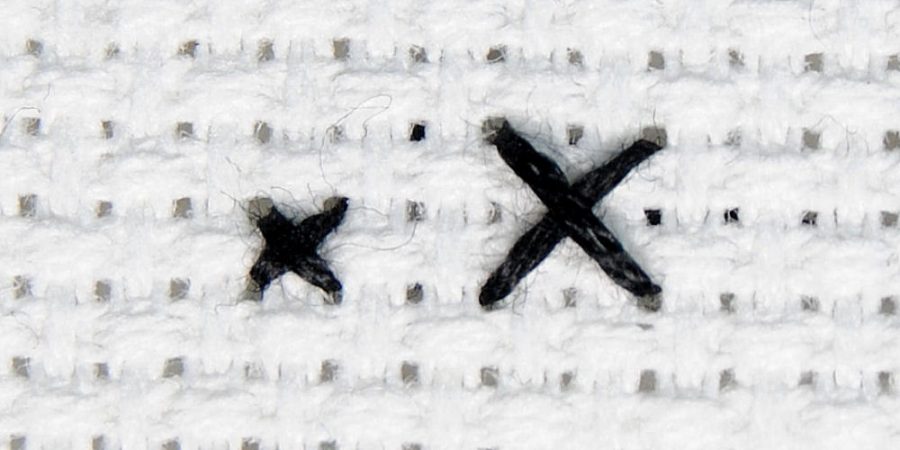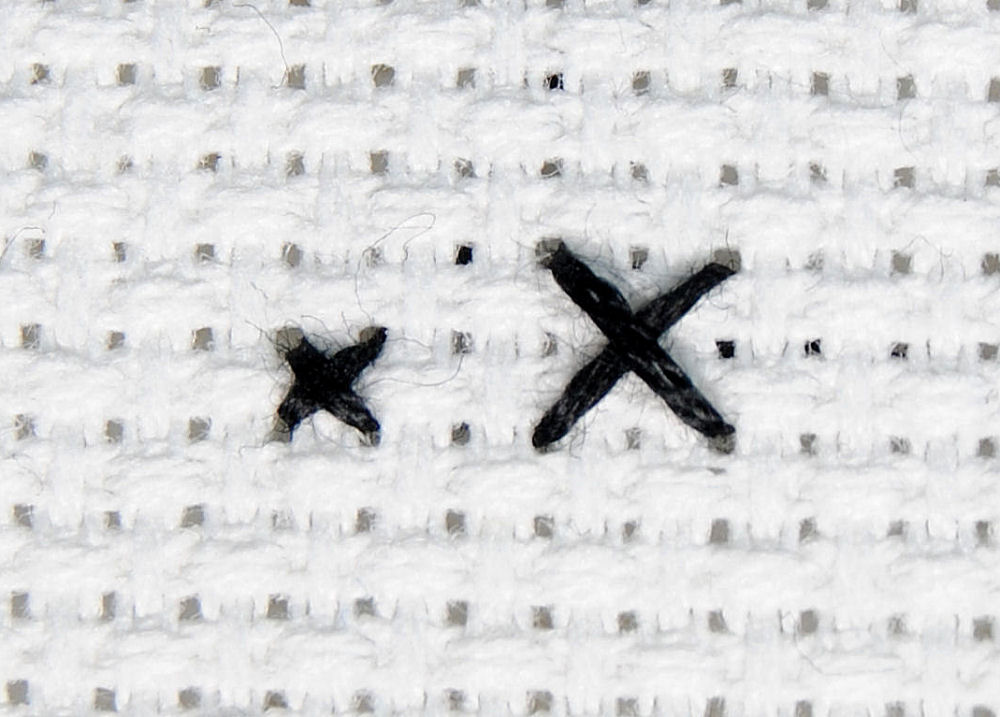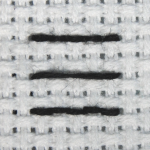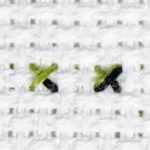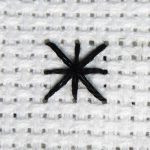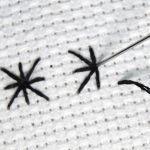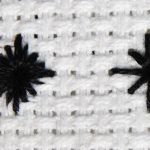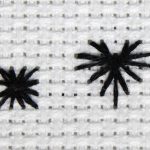This article is part of a series on Advanced and Specialty Stitches. Check the main article for a full list of stitches. This one is just about stitching “over 2”.
Occasionally you’ll see stitchers ask each other how a piece was stitched. What fabric they used, how many strands of thread were used, etc. For many, part of that answer is distinguishing whether they stitched “over 1” or “over 2”. This is especially true when you start working on higher count fabrics.
Table of Contents
What does it mean?
Quite simply, stitching over 2 means you’ll be stitching across two holes instead of just one. This is typically done on higher counts, especially 28+. I’ve done my example on 14 count so it’s easier to see what I mean, though.
When to stitch Over 2
If you’re stitching on 14 count aida, it’s generally assumed that you’re stitching one stitch per square. Which means you’ll be fitting at most 14 stitches an inch. But when you get to 28 count and up, that could change.
You can certainly stitch over 1 on 28 count. And as I talked about in my article on Petit Point, this makes for a much more detailed looking stitch. But also a much smaller one.
Instead, many choose to stitch ‘over 2’, aka across two squares. Stitches on 28ct+ can be pretty tiny. Stitching over 2 on 28 count makes the Xs once again the same size they would have been on 14 count. But now you have these extra holes between the stitches that you can use to make specialty stitches easier!
This is also helpful if you don’t want your fabric to be as obvious. Some people don’t like those big ol’ holes showing up in the background of their work. and making the stitches larger does make the holes look smaller, after all.
Here’s a closeup from my Legend of Zelda Courage cross stitch pattern, stitched over 2 on 36 count linen
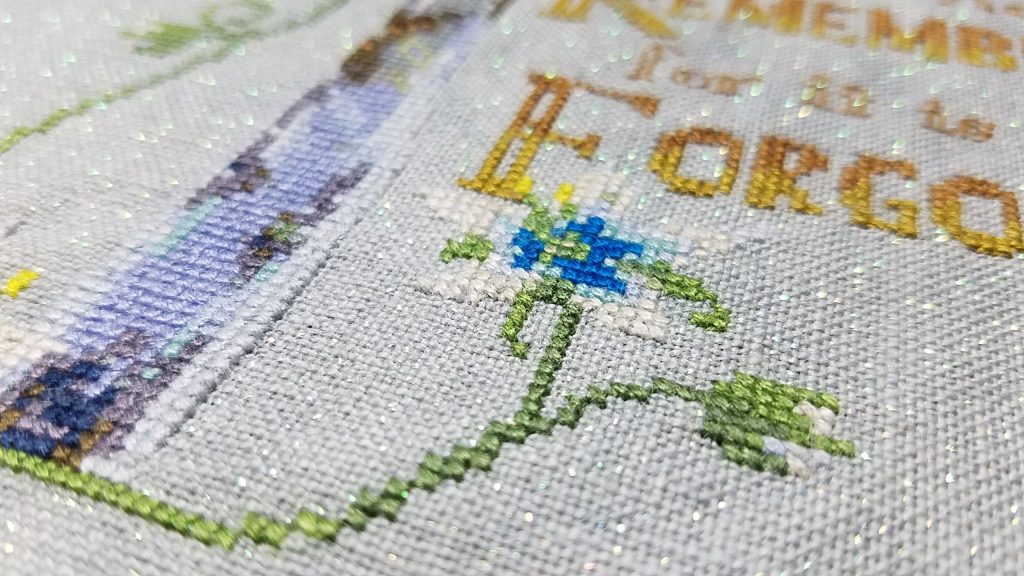
How to stitch over 2
You’ll want to take it slowly your first time stitching over 2, as you’ve likely built up some muscle memory and will naturally try to revert to stitching over 1. This is especially true when you need to count a few stitches away to continue a color. Rather than counting 3 stitches away, you need to remember to count two holes for each of those stitches.
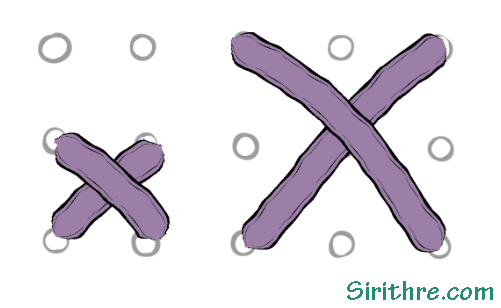
Other than that, it’s not really any more complicated than just stitching as normal across two holes. Try not to overcomplicate it!

